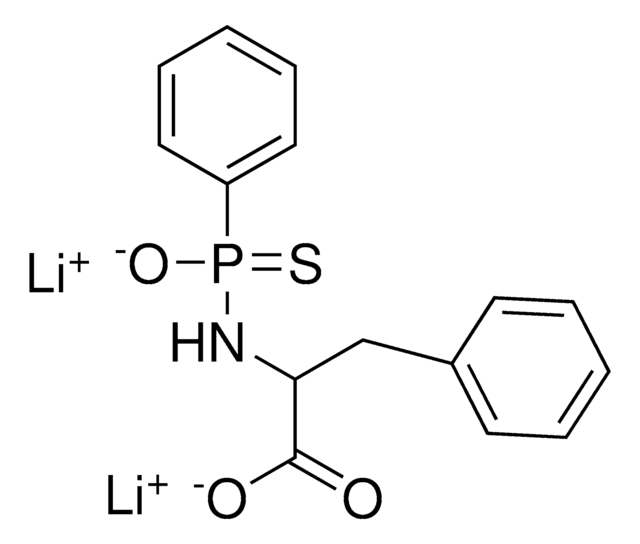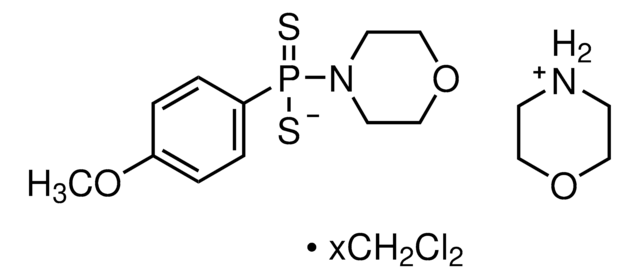Key Documents
SMB00289
Diallyl trisulfide
≥98% (HPLC)
Synonim(y):
Allyl trisulfide, Di-2-propenyl trisulfide
About This Item
Polecane produkty
Poziom jakości
Próba
≥98% (HPLC)
Postać
oil
Zastosowanie
metabolomics
vitamins, nutraceuticals, and natural products
temp. przechowywania
−20°C
ciąg SMILES
C=CCSSSCC=C
InChI
1S/C6H10S3/c1-3-5-7-9-8-6-4-2/h3-4H,1-2,5-6H2
Klucz InChI
UBAXRAHSPKWNCX-UHFFFAOYSA-N
Szukasz podobnych produktów? Odwiedź Przewodnik dotyczący porównywania produktów
Powiązane kategorie
Opis ogólny
Zastosowanie
Działania biochem./fizjol.
Hasło ostrzegawcze
Danger
Zwroty wskazujące rodzaj zagrożenia
Zwroty wskazujące środki ostrożności
Klasyfikacja zagrożeń
Acute Tox. 3 Oral
Kod klasy składowania
6.1C - Combustible acute toxic Cat.3 / toxic compounds or compounds which causing chronic effects
Klasa zagrożenia wodnego (WGK)
WGK 3
Temperatura zapłonu (°F)
Not applicable
Temperatura zapłonu (°C)
Not applicable
Certyfikaty analizy (CoA)
Poszukaj Certyfikaty analizy (CoA), wpisując numer partii/serii produktów. Numery serii i partii można znaleźć na etykiecie produktu po słowach „seria” lub „partia”.
Masz już ten produkt?
Dokumenty związane z niedawno zakupionymi produktami zostały zamieszczone w Bibliotece dokumentów.
Klienci oglądali również te produkty
Nasz zespół naukowców ma doświadczenie we wszystkich obszarach badań, w tym w naukach przyrodniczych, materiałoznawstwie, syntezie chemicznej, chromatografii, analityce i wielu innych dziedzinach.
Skontaktuj się z zespołem ds. pomocy technicznej









